This drawing shows a cross-section of the Martian frozen ground.
Click on image for full size
NASA
The Martian Cryosphere
The drawing shows the depth at which water may be frozen into the ground. To have water running on the surface of Mars, this water region must be near to the surface. This may have happened at various times in the history of Mars as the climate warmed.
You might also be interested in:
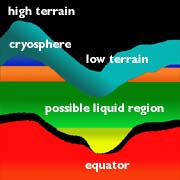
On Mars, the water is trapped, frozen, within the ground. Nevertheless, there is evidence for running water on Mars. When the water is melted and released to the surface, it will run from higher ground
...more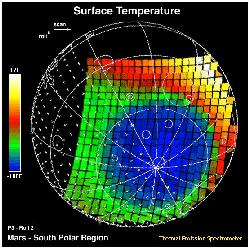
This image shows how cold the surface of Mars can be. The temperature of the surface was measured by the Mars Global Surveyor spacecraft. The scale to the left shows that purple regions are the coldest,
...more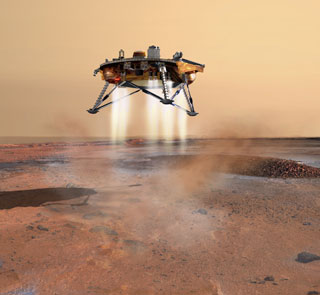
NASA sent a new spacecraft to Mars. It is called the Phoenix Mars Lander. Phoenix landed near the North Pole of Mars. Scientists think there is ice buried under the ground there. Life on Earth needs water.
...more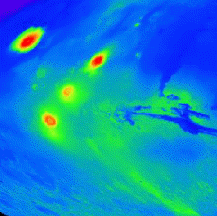
On this map of Mars, the lightly cratered Tharsis Ridge is shown, as well as the heavily cratered Martian highlands (near the bottom of the picture), and Valles Marineris to the right. The volcanoes are
...more
The drawing shows the depth at which water may be frozen into the ground. To have water running on the surface of Mars, this water region must be near to the surface. This may have happened at various
...more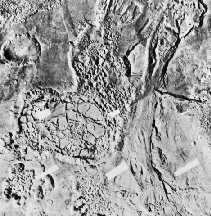
Separate from the Martian outflow channels, or the river valleys, are large Martian lakes (600 km, or ~1000 miles across) which once were part of a flood.
...more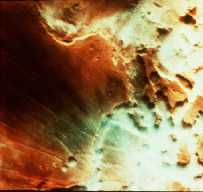
This picture shows fog on Mars. More fog has been seen in images returned by Mars Global Surveyor of the south polar region of Mars. Martian fog may have a little bit of acid mixed in with the water drops.
...more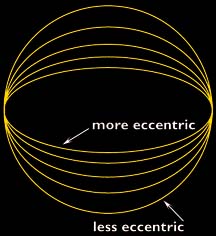
The orbit of Mars is very oval shaped. The orbit is much more oval shaped than the Earth's orbit. This means that the climate of Mars can change drastically between warm and cold.
...more













